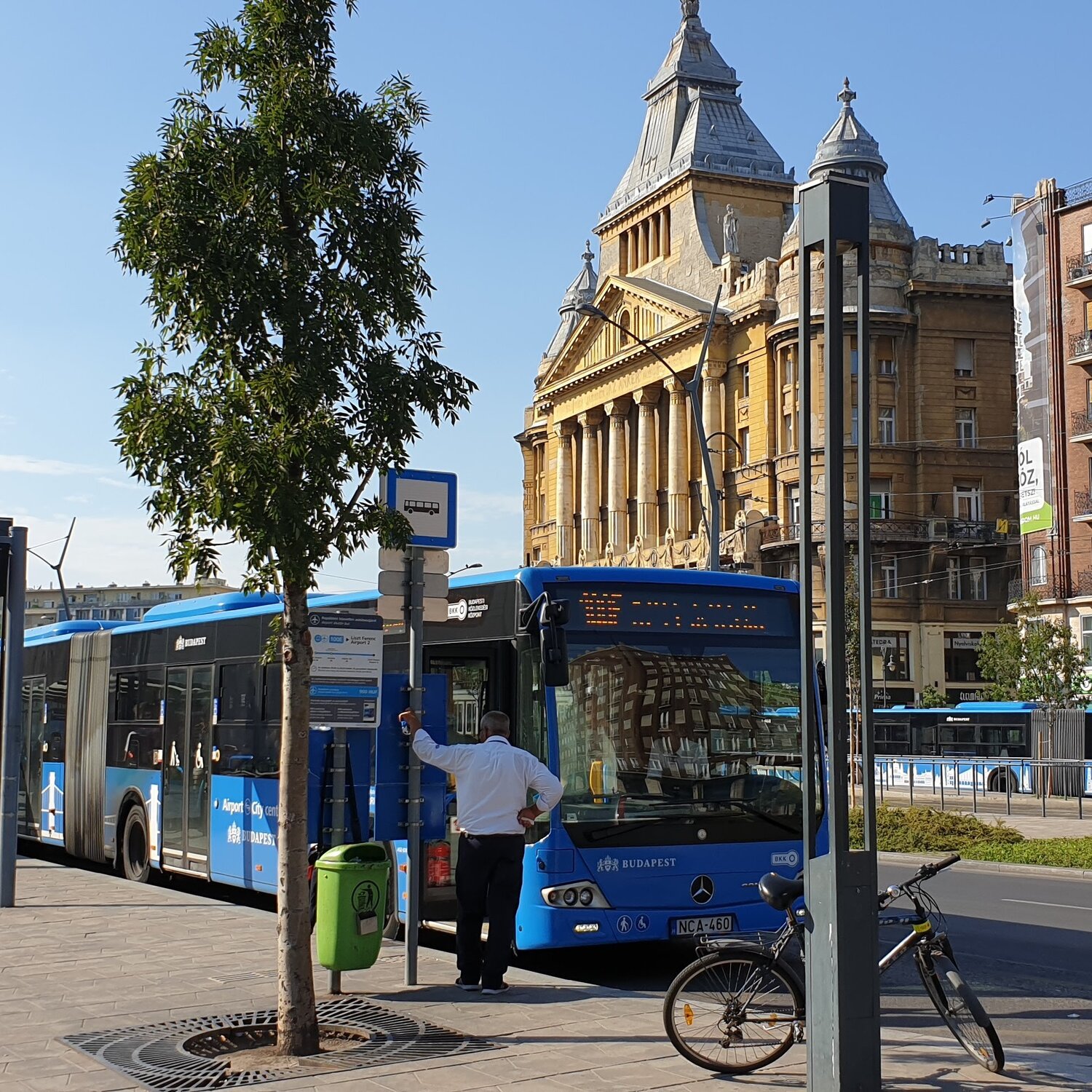Budapest’s streetcars or subways make it easy to get to any neighborhood, the bus comes in handy for climbing a high mountain, and ferries take you on a ride along the Danube. Exploring the city and sights of Budapest without buses and streetcars is quite a challenge. Especially if you are not staying in one of the central districts. Where to live in Budapest
The currency of Hungary is the forint (HUF). There are approximately 332—337 HUF in 1 €.
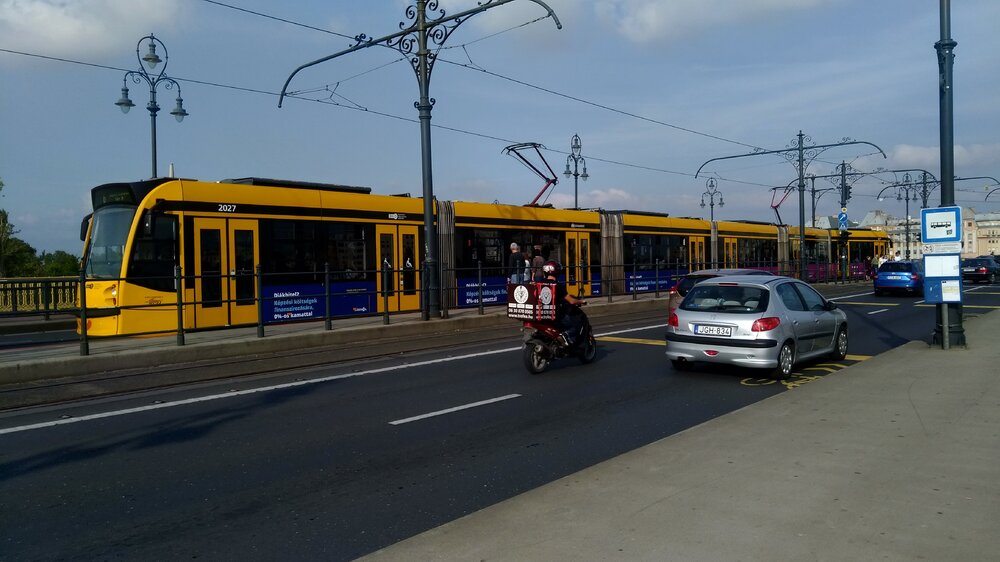
Tickets and travel regulations
Already at the Budapest airport and train station, it becomes clear that it is easy to use municipal transportation: there are machines with menus in Russian at the exits. It remains to be seen which ticket is suitable for your trip.
Budapest does not have a single ticket for public transportation, unlike, for example, Prague, where one ticket is valid for trips to/from the airport, overground and underground transportation, funicular and ferry. «Single» ticket in Budapest is valid only for surface and underground transportation within the city. You have to buy a separate ticket for the ferry or the airport bus.
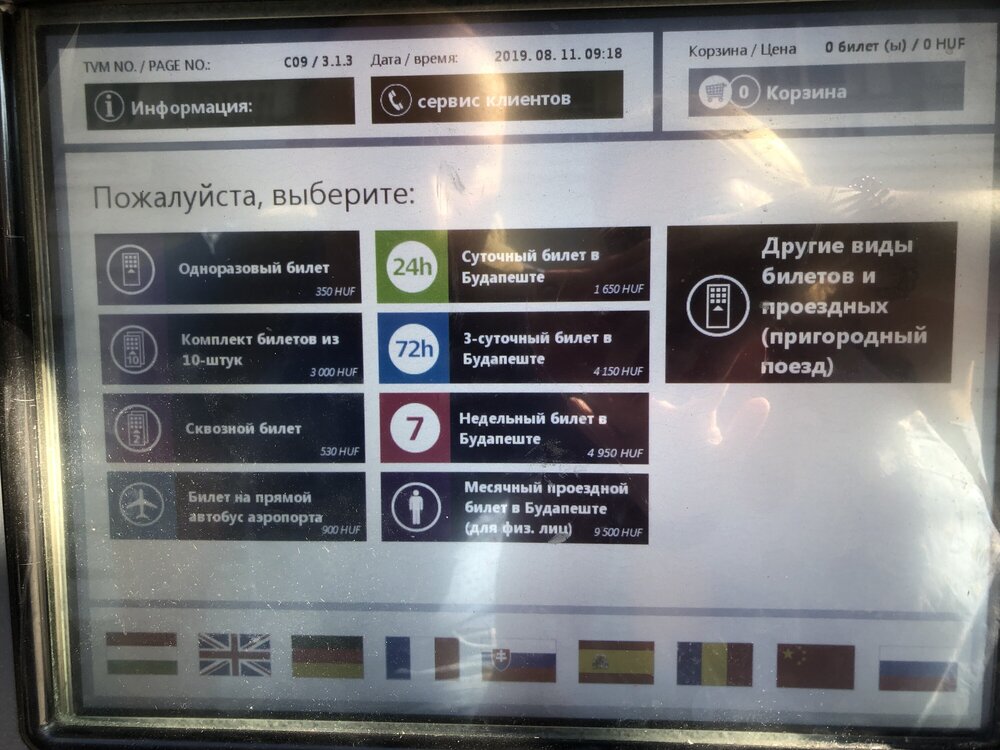
Types of tickets in Budapest
- A ticket for a single ride on ground transportation or the metro is 350 HUF in a machine or 450 HUF when purchased from the driver. This single ticket is valid for 80 minutes. You can only transfer within the subway, and you must validate your ticket at the turnstile when changing from one line to another.
- A set of 10 tickets is 3000 HUF, this is a 20% better deal than single tickets. These are a pack of 80 minute tear-off tickets. They are valid on the subway with a transfer, and on ground transportation without a transfer.
- A metro ticket for up to 3 stops is 300 HUF. Valid for 30 minutes and allows transfers.
- The through ticket is 530 HUF. This is a single ticket for ground transportation and metro, it allows transfers. It is cheaper than two separate bus and subway rides for 350 and 300. Such a ticket consists of two coupons: the main one and the transfer one. The first one (with number 1) must be composted, the second one (with number 2) does not need to be composted, but must be carried with you when transferring. The through ticket is valid for 90 minutes during the day and 120 minutes at night.
- Water transportation ticket — 750 HUF. Valid for flights D11, D12, D14. The ticket is cheaper than for pleasure boats, and you can ride quite far.
- A 100E bus ticket to/from the airport is 900 HUF.
- The daily ticket is 1650 HUF and allows any number of trips and transfers on all means of transportation. This even includes ferry rides on the D2, D11 and D12 lines, but only on weekdays. The same ticket applies to VOLÁNBUSZ buses and MÁV-START railroads.
There’s also a day pass for 5 people (3300 HUF), but it’s not shared: you have to ride all five together.
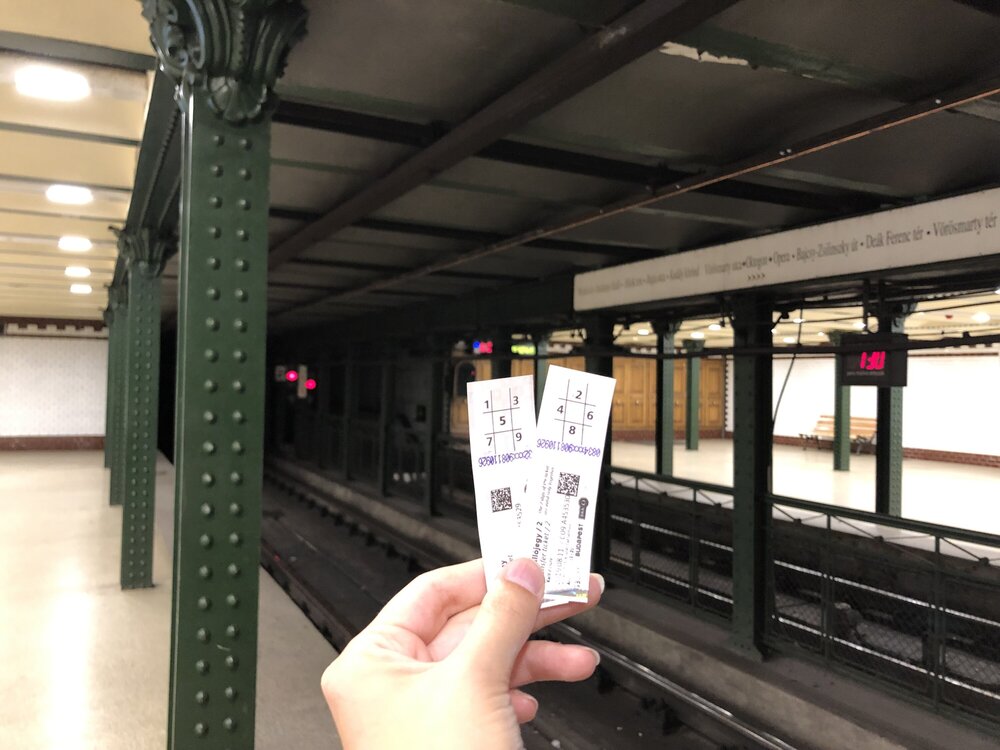
These options are optimal for 2—3 days. If you are coming for a longer period of time, check out other types of tickets on the official BKK portal . Passes for a period of 1 week or more are registered, which means that a passport is required for purchase.
If it is difficult to decide on a ticket, you can opt for the Budapest card. It acts as a pass for all BKK transportation and also gives you bonuses and discounts on entertainment in Budapest. You can buy the card online with a 5% discount or at a ticket office where transport tickets are sold, and then pick it up at info centers or have it delivered to your hotel.
Ticket outlets
Tickets are sold at the airport, at all bus stations, at metro entrances and stops, at major intersections, and sometimes at the driver’s side. The nearest point of sale can be found on an online map.
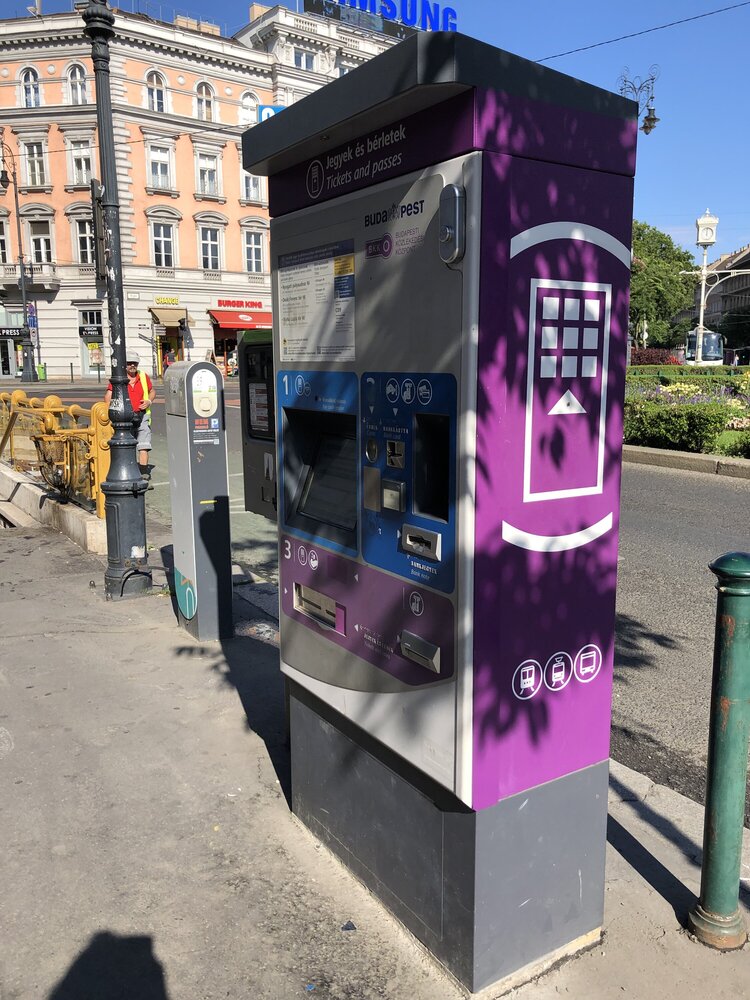
You can buy all kinds of tickets and pay by cash or card at the regular ticket offices, but the offices work in the same mode as the subway — not around the clock.
Ticket machines are open 24 hours a day, but not all of them accept card payments. In addition, they are not available at every station — for example, there were no ticket machines at Vörösmarty utca metro station. I recommend buying passes in advance.
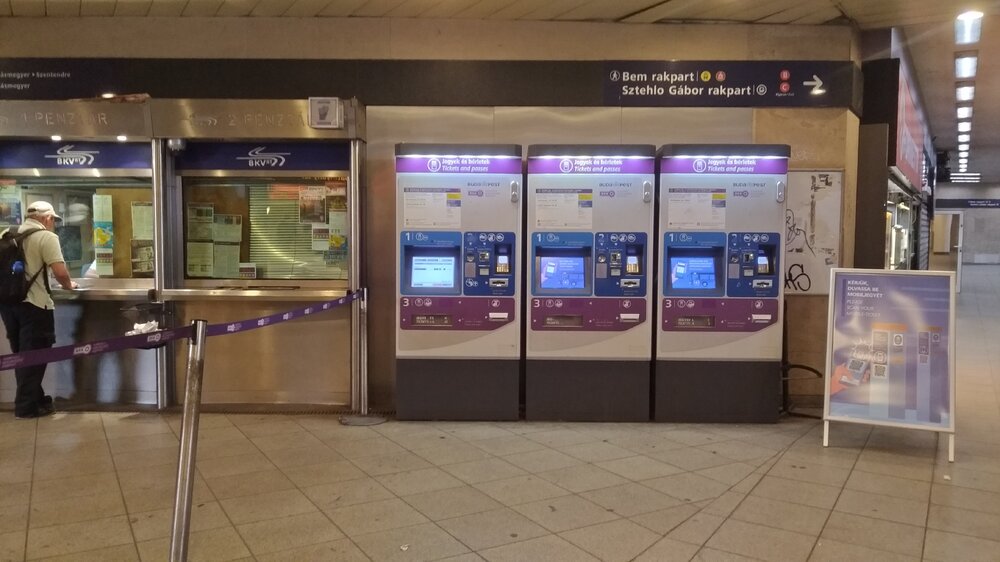
Penalty
Your ticket must be composted before you start your journey. There are validators for this in ground transportation and composters at the entrance to the subway.
If you pay cash on the spot, the fine is halved. Sometimes conductors have terminals with them, but this is very rare.
If the fine cannot be paid, the violator will be given a receipt and sent to a client center or a special office. Two days are given for payment. After 30 days, the fine will double to 32,000 HUF.
The cheat sheet will help you understand where and how to pay your fine.
How to plan a route
I use offline maps.me — I download a map of the city in advance. These maps are good at building routes around Budapest and knowing its public transportation. Alternatively, you can use an online route planner. Wi-Fi is available almost everywhere in the city, you won’t have any problems with connection.
Separately there are day and night city transport schemes, subway and river streetcar routes. At all stops there is a timetable for each transportation number.
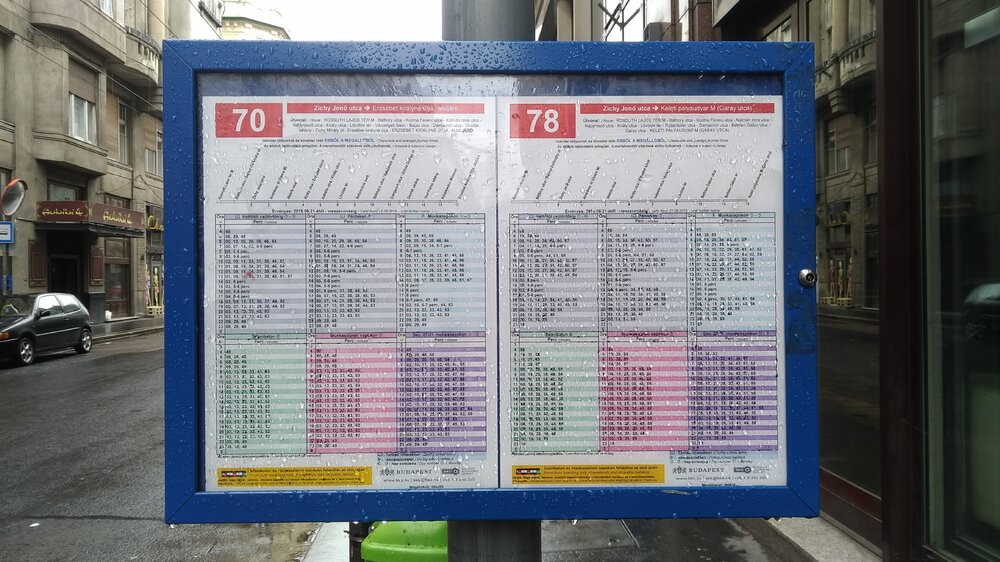
Types of transportation in Budapest
The transportation network of the Hungarian capital includes 180 bus lines, 29 streetcar lines, 14 trolleybus routes and 4 metro lines. The routes run through the center and reach the most remote points of the city.
Municipal buses
In Budapest, buses run 24 hours a day. Daytime services are numbered 5 to 298 and run from 4:20 to 23:20. After 23:20, night buses numbered 901 to 999 operate.
The interval of buses is 5—7 minutes during the day and 20—30 minutes at night.
Buses 100E and 200E, which run to/from the airport and take over Nepliget station, duplicate the metro a bit. Bus 100E helped me out when the metro was closed for renovation: it runs along the blue line to Nagyvárad tér station.
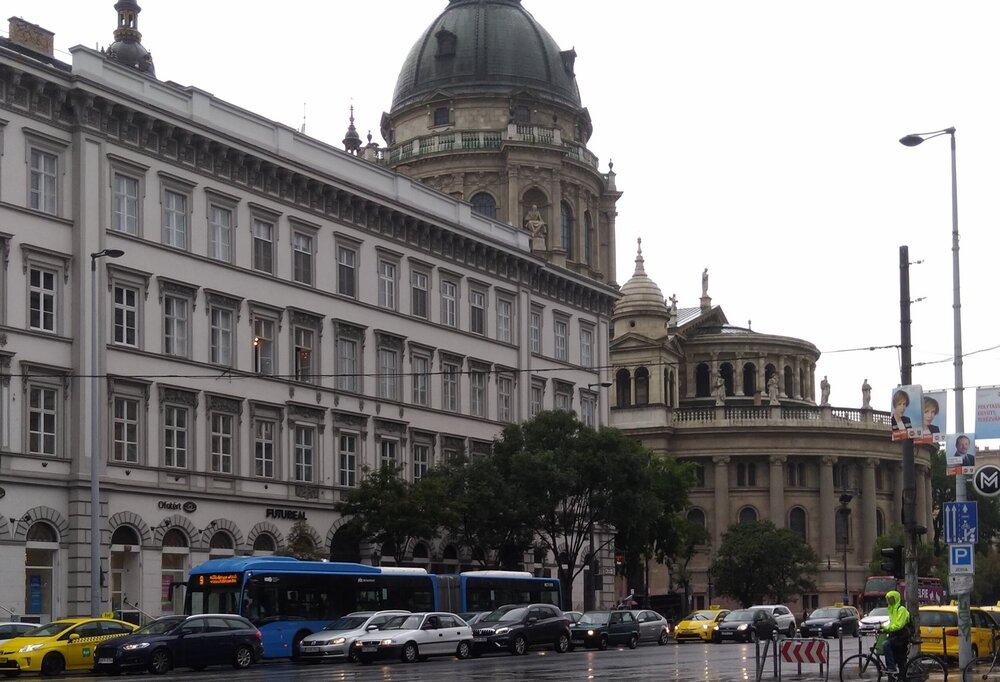
Streetcars
Streetcars are a separate attraction in Budapest, they run all over the city and reach the outlying areas. Both old and new streetcars are stylish and cozy, and the yellow color adds color to the overall look of the city. The new trams have Wi-Fi.
Streetcars run from 4:20 to 0:20, and No. 6 runs around the clock. Traffic interval is 10—15 minutes, and during rush hour it is only 1—2 minutes. New models are considered to be the longest in Europe: there are streetcars up to 54 meters long, with six sections, which carry up to 20,000 passengers per hour — almost like a subway.
Streetcar No. 60 rides on a toothed railroad. It is so called because there is a jagged rail in the middle of the normal track, and the streetcar has an additional toothed wheel on the bottom of the streetcar. This helps the streetcar to climb a high hill without slipping.

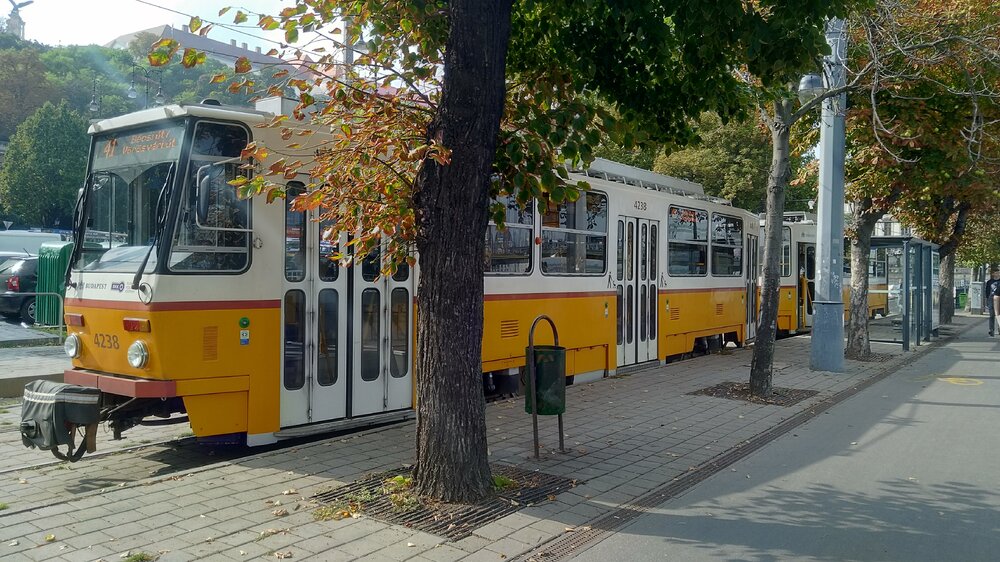
Trolleybuses
There are far fewer trolleybuses in Budapest than buses or streetcars: only 16 routes, and all of them run around Pest.
Morning flights depart at 4:30 am and end at 11:00 pm. The interval is approximately 3—10 minutes. You can see the schedule here.
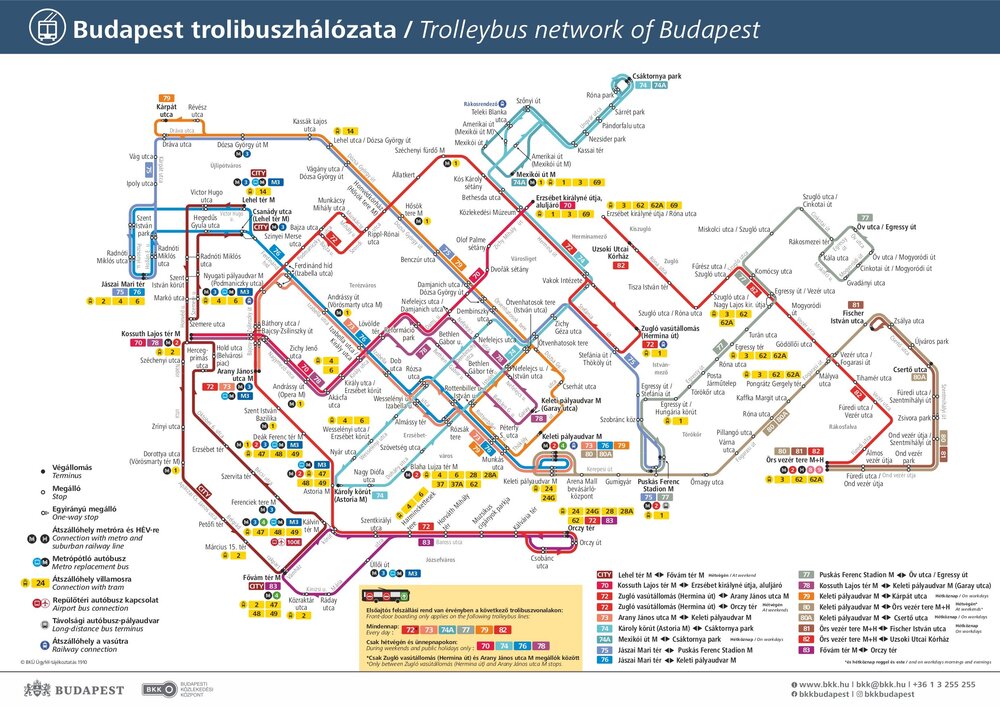
Metro
Budapest’s metro is the first on the continent and the second in Europe, after London. The first branch (yellow line) started operating in 1896. Old stations and carriages can still be found on the yellow line: they are painted yellow and passengers sit in them like in a bus. Newer trains are blue or white and passengers sit opposite each other.
Using the metro is easy: there are ticket offices and machines at the entrance and turnstiles before the descent. There are currently four lines in Budapest, three of which intersect at the key station DeákFerenc tér — in the very center of Budapest near Andrássy Avenue. They promise to launch a fifth line soon.
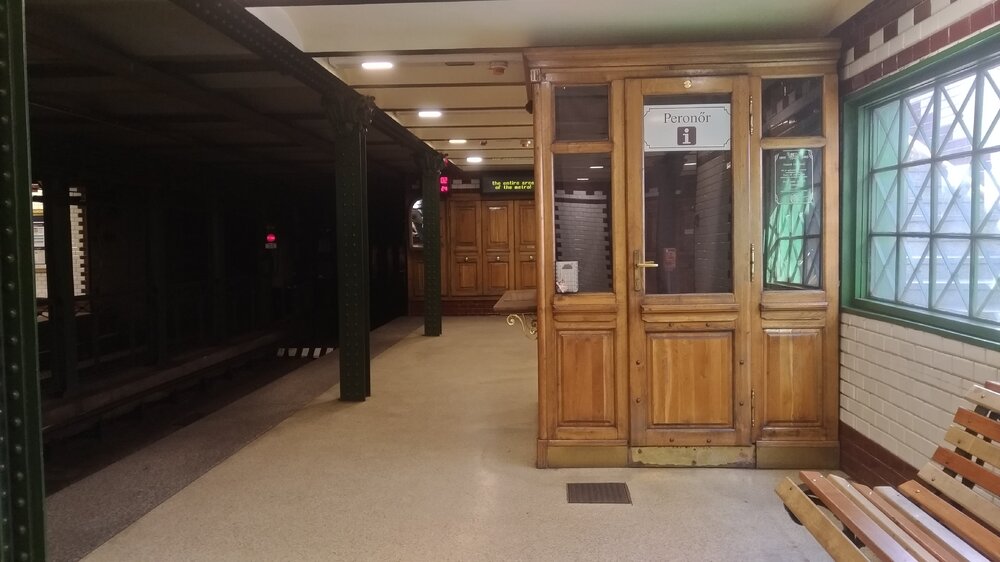
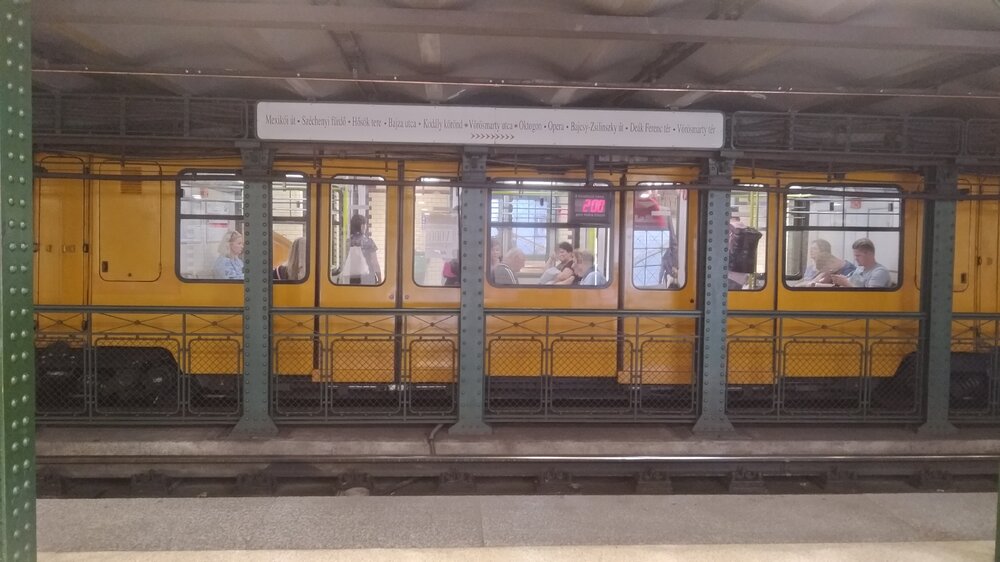
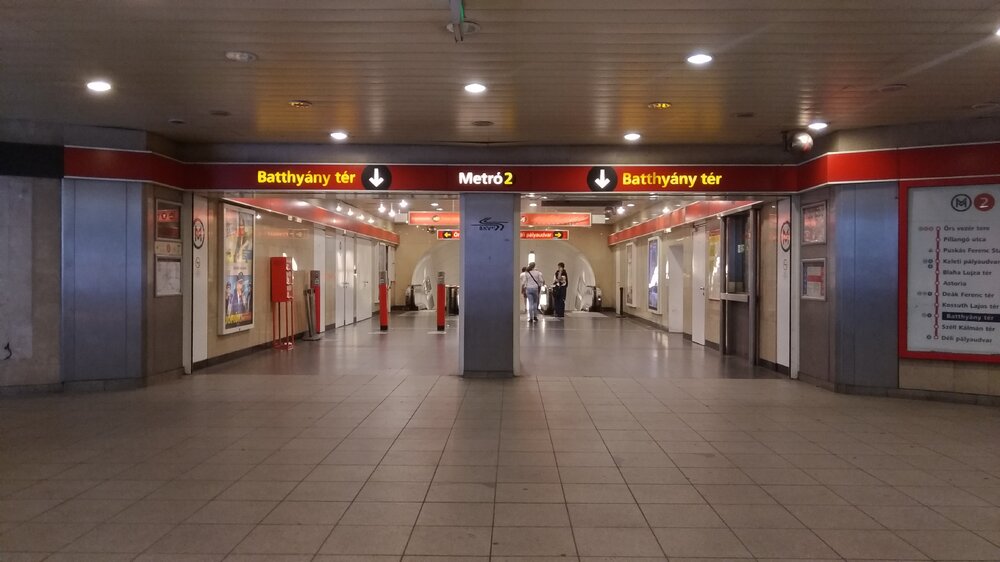
The subway opens at 4:30 and runs until 23:00. Trains run every 5—15 minutes, depending on traffic.
In 2020, the M3 blue line is on reconstruction. It is duplicated by the M3E and 200E buses and partly by the 194M and 204M. Alternative transportation options are marked here.
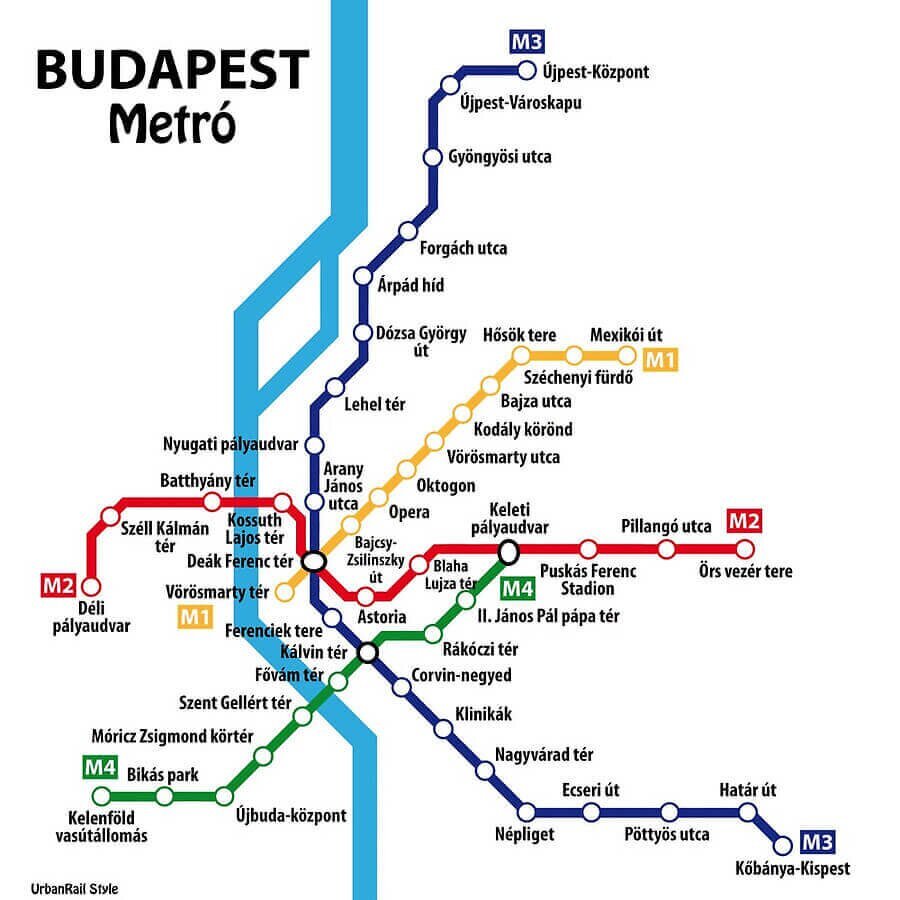
River streetcars
Ferries in Budapest are more entertainment than useful public transportation. There are regular and excursion river streetcars on the river, the price difference is 3 times, so tourists are frequent passengers of ferries.
You can board and disembark at any marina. Conveniently, there is a bus or streetcar near each stop. A map of shipping lines will help you get oriented.
Water transportation starts at 7:00 and ends at 20:00. The interval is 30—40 minutes.
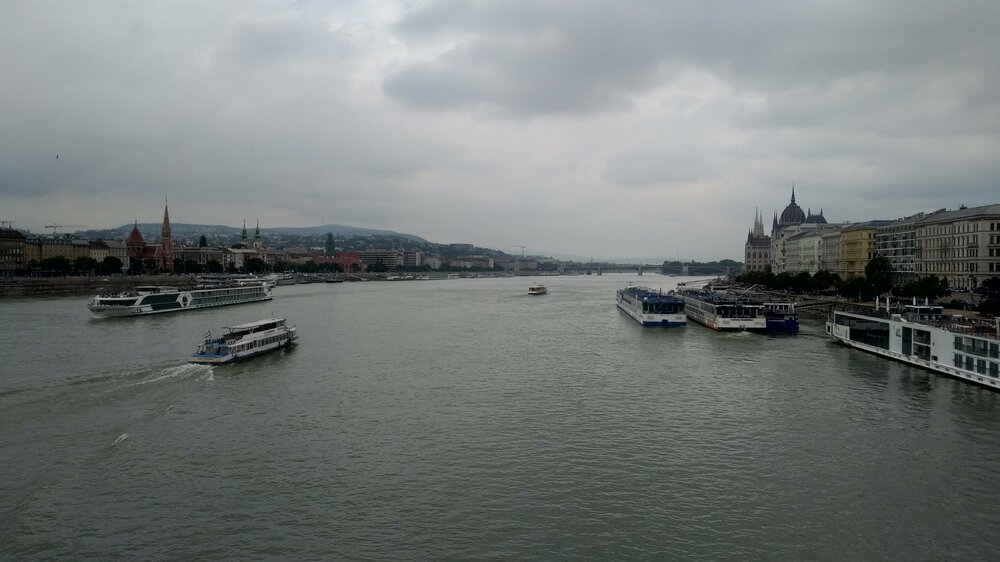
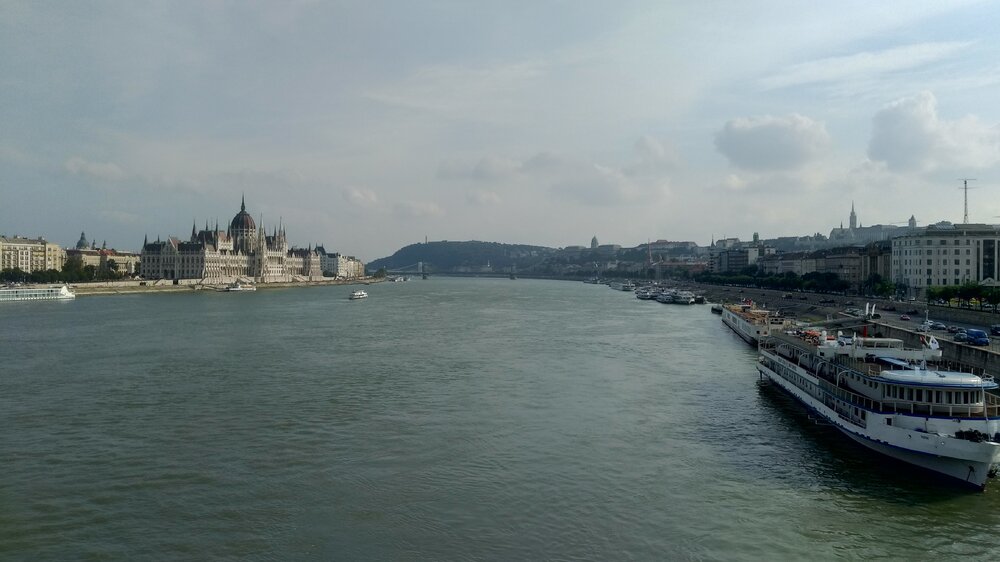
Tourist buses
The «Hop on, Hop off» service is so popular in Budapest that in the center, tourist transport is more often seen on the roads than regular transport, and about every 300 meters there are kiosks with ticket and brochure sellers. However, buying online is more favorable: you can buy at a discount of up to 10% and calmly figure out which of the routes will suit you best — and there are many of them.
There are day and night rides through the streets of Budapest, a Danube River cruise, and walking tours. Prices start from 20 €. Tickets, as standard, are for 24, 48 and 72 hours.
There are several travel options available:
- Big Bus. Day and night trips around Budapest. The advantage of these buses is the Wi-Fi on board. Other buses do not have this service. If you take tickets online, you will get a 10% discount.
- Citu Sightseeing. This company has several routes in Budapest. A 48-hour ticket comes with a free ride aboard a pleasure boat and/or an overnight bus ride.
- Budapest Sightseeing. Tickets are for 48 hours only, but the ticket price includes goulash and beer. Includes walking, water and bus tours, as well as discounts of up to 20—60% in souvenir shops and bars (see the booklet that comes with the ticket for a full list). Children under 8 years old get a free ticket.
- River Ride. The amphibious bus rides through the streets of Budapest and then descends into the water via a ramp and continues along the Danube. Only an English-speaking guide is on board.
Night bus tours of Budapest are spectacular. Have you seen the photo of the Parliament in lights? It’s worth it. The trip starts at 18:00 and lasts 60—70 minutes. Just at this time the illumination turns on.
Retro transportation in Budapest
Part of the municipal transportation system in Budapest is Budapest’s historic transportation: vintage streetcars and buses. Their routes are integrated into the city network and are used daily by tourists and locals alike. The ticket price for all retro transportation is the same; it only runs in summer. For 500 HUF you can take a ride to the desired point in the atmosphere of 50—70 years ago.
On the left bank, an old model streetcar runs on route No. 2, which is among the 10 most beautiful streetcars in Europe. You can meet it from May through October on Saturdays starting at 14:50 and running until 20:30. I made it.
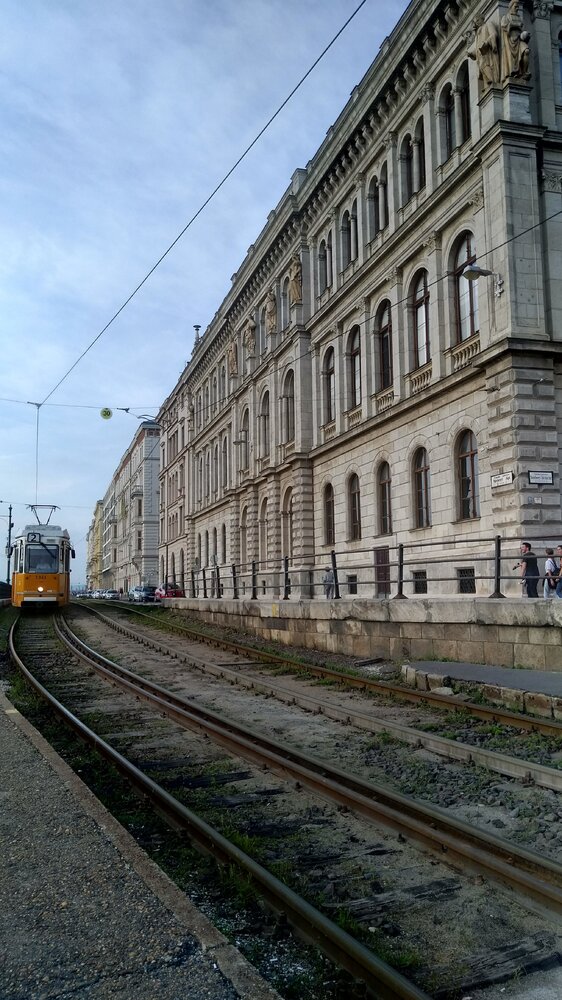
Along the Danube, another vintage model of streetcar runs along route No. 19. It starts at Deák Ferenc tér and passes by some of Budapest’s landmarks — it is convenient to use for a self-guided tour, as an analog of a tourist bus. You can ride it on Sundays 14:45—20:30 from May through October.
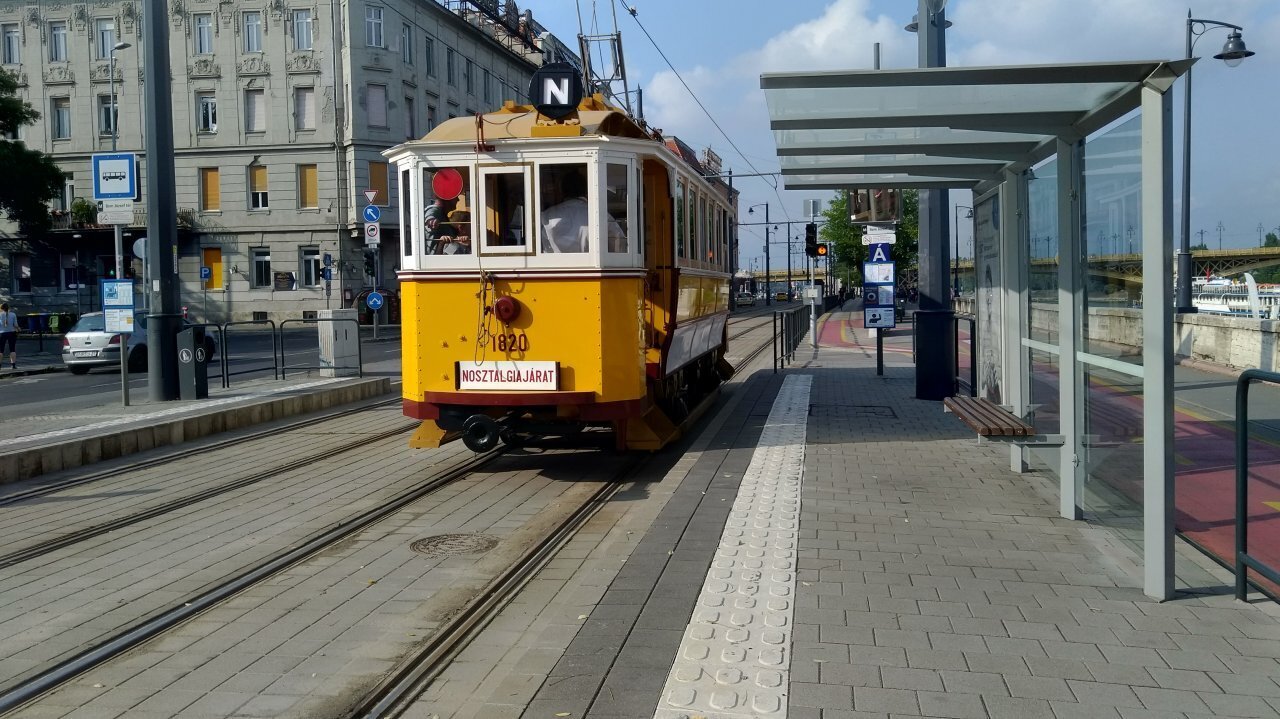
The retro transport includes bus No. 109 — an unusual Ikarus 180 cabriolet. This model was produced at the local factory from 1964 to 1973.
The bus starts at DeákFerenc tér square, then travels through the center and along both banks of the Danube. You can see the route on the map. The Ikarus runs only on Sundays from May 1 until the end of October.
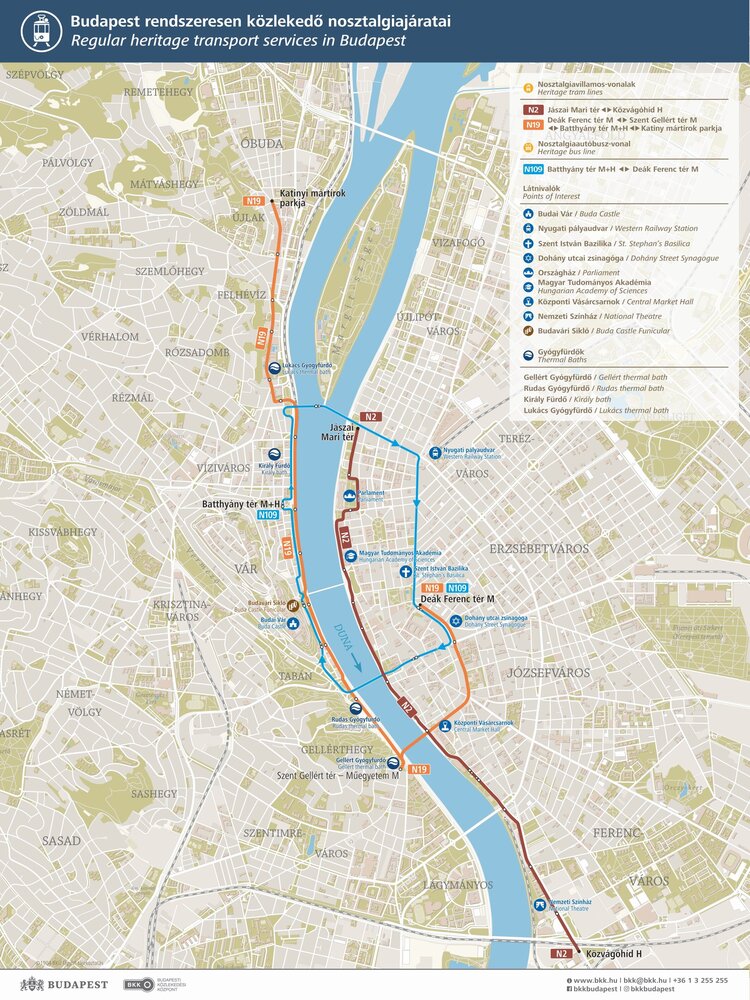
What you need to know about public transportation in Budapest:
- I recommend that you always have a spare ticket with you: sometimes the machines don’t accept cards and the driver doesn’t have tickets. One time I was refused a ride because the bus had run out of tickets.
- If you have an early morning bus to the airport and no cash, it’s better to buy a ticket the day before at the subway ticket office.
- When buying a ticket in the machines, be prepared that the ticket may not fall out in the dispenser. That’s how I tried to buy a ticket in the subway: I paid, it printed something, but the ticket didn’t fall out. My first thought was that the machine wasn’t working. A local resident helped: he stuck his hand into the tray and pulled out a bunch of tickets stuck to a piece of scotch tape. According to him, this is how local «drug addicts» make a living: they stick tape to the printer, collect the tickets, and then sell them at the bus stops for a few forints cheaper. If the machine doesn’t give you a ticket, check at the top of the tray.

